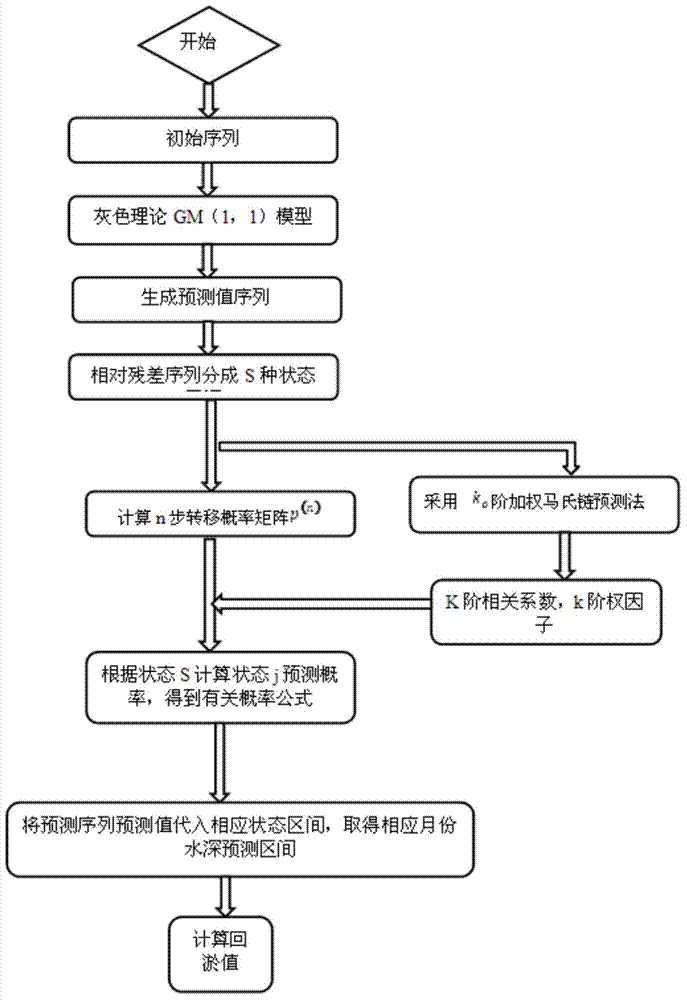Dredging channel back-silting amount predicting method based on timing sequence analysis-Markov chain method
A time series analysis, Markov chain technology, applied in special data processing applications, instruments, electrical digital data processing, etc., can solve problems such as insufficient data sequence length, dredging groove erosion, difficult terrain measurement in dredging grooves, etc., to improve prediction. The effect of precision
- Summary
- Abstract
- Description
- Claims
- Application Information
AI Technical Summary
Problems solved by technology
Method used
Image
Examples
Embodiment Construction
[0029] A more complete and better understanding of the present invention can be obtained by referring to the accompanying drawings.
[0030] Embodiments of the present invention will be described with reference to the drawings.
[0031] Taking a port dredging project in Yueqing Bay as an example, the method for predicting the silting volume of dredged tanks of the present invention is used in the project to predict. According to the water depth of the dredged tank from May to October 2009, the water depth of the dredged tank from November 2009 to May 2011 was predicted, and the predicted values were compared with the initial measured value in May 2009 to obtain the dredged tank return value. silt predicted value.
[0032] The specific process includes the following steps:
[0033] Step 1. Select a spatially discrete original sequence
[0034] According to the actual measurement of the water depth of the dredged tank from May to October 2009, this series of water depth val...
PUM
 Login to View More
Login to View More Abstract
Description
Claims
Application Information
 Login to View More
Login to View More - R&D
- Intellectual Property
- Life Sciences
- Materials
- Tech Scout
- Unparalleled Data Quality
- Higher Quality Content
- 60% Fewer Hallucinations
Browse by: Latest US Patents, China's latest patents, Technical Efficacy Thesaurus, Application Domain, Technology Topic, Popular Technical Reports.
© 2025 PatSnap. All rights reserved.Legal|Privacy policy|Modern Slavery Act Transparency Statement|Sitemap|About US| Contact US: help@patsnap.com



